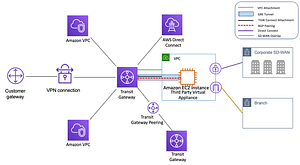If you’re like many businesses today, you’re probably using Amazon Web Services (AWS) to host your website or application. AWS is a powerful and flexible cloud platform that offers a wide range of services, including computing, storage, networking, and more.
But as with any technology, there are some common mistakes that users make when using AWS. In this blog post, we’ll take a look at five of the most common mistakes to avoid when using AWS.
1. Not keeping track of your usage
One of the biggest mistakes you can make when using AWS is not keeping track of your usage. AWS charges based on usage, so if you’re not paying attention to how much you’re using, you could end up with a hefty bill.
To avoid this mistake, it’s important to set up billing alerts and monitor your usage regularly. AWS provides a variety of tools to help you track your usage, including the Cost and Usage Report, the AWS Budgets service, and the Billing and Cost Management Dashboard. Read more on cost management from AWS here
2. Not securing your resources
Another common mistake is not properly securing your resources. AWS provides a number of security measures to help protect your resources, but it’s up to you to ensure that they’re properly configured.
To avoid this mistake, be sure to follow best practices for security, such as using strong passwords, enabling multi-factor authentication, and using security groups to control access to your resources. It’s also a good idea to regularly review your security settings and make sure that they’re up to date.
Find out more on how to secure AWS resources from this AWS blog post
3. Not using the right instance type
AWS offers a variety of instance types, each with different capabilities and pricing. Choosing the wrong instance type can result in poor performance or unnecessary costs.
To avoid this mistake, it’s important to understand the different instance types and choose the one that best meets your needs. You can use the AWS Instance Comparison Tool to compare the features and pricing of different instance types.
4. Not scaling resources correctly
Scaling resources correctly is crucial for optimizing performance and costs on AWS. If you don’t scale your resources correctly, you could end up with either too few resources (leading to poor performance) or too many resources (leading to unnecessary costs).
To avoid this mistake, it’s important to use the right tools and techniques for scaling your resources. AWS offers a number of tools for scaling, including Auto Scaling, which automatically adjusts the number of resources based on demand, and AWS Lambda, which allows you to run code in response to specific events.
5. Not backing up your data
Finally, it’s important to remember to back up your data. While AWS provides a number of services for storing and protecting your data, it’s still your responsibility to make sure that your data is properly backed up.
To avoid this mistake, make sure to use the right tools and techniques for backing up your data. AWS offers a number of services for backup, including Amazon S3, Amazon EBS, and Amazon RDS. It’s also a good idea to have a disaster recovery plan in place to ensure that you can quickly and easily restore your data in the event of an outage or other disaster.
In conclusion, AWS is a powerful and flexible platform that can help businesses of all sizes host and manage their websites and applications. However, it’s important to avoid common mistakes like not keeping track of your usage, not securing your resources, not using the right instance type, not scaling resources correctly, and not backing up your data. By following best practices and using the right tools and techniques, you can ensure that you’re getting the most out of AWS and minimizing costs and risks.











